Facing stoves with ceramic tiles: do it yourself
Facing fireplaces and stoves with ceramic tiles can be said to be a classic type of decoration. This material has been preferred for many centuries, because the coating is strong, durable and aesthetic.
The first began to use tiles, the beauty of which could not leave anyone indifferent - in many historical buildings such stoves and after two hundred years delight the eye. They were made by hand and were very expensive, but over time, other options appeared, the price of which is not so high.
We will tell you what ceramic tiles for facing furnaces are currently used, and what is the technology for the production of this work.
The content of the article
Types of heat-resistant tiles
The outcome of any finish depends largely on the correct selection of the material used, and stove lining ceramic tiles are no exception. The decorative coating of the furnace is subject to special requirements.
This is understandable, because it will be subject to constant heating and cooling.
So:
- Everything is important here: from the quality of the brickwork to the technical characteristics of the glue used for facing the stove with ceramic tiles. Therefore, before you are given instructions for performing the facing work, we offer you an overview of those types of tiles that are suitable for finishing a fireplace or stove in all respects.
| Type of tile | Production Features | Specifications |
| This type of tile is made from a special composition obtained by mixing chamotte (refractory) clay, quartz sand, feldspar and earthenware. Products are extruded and subjected to high temperature firing. | Standard sizes: 240 * 71 * 8 mm 320 * 148 * 12 mm Properties: low water absorption; high wear resistance; strength and resistance to critical temperatures; high surface hardness and resistance to chemical attack. | |
| White clay (kaolin), feldspar, sand and mineral additives are used in its production, due to which the products acquire color and texture. It can be molded both by extrusion and by compression under high pressure. Calcined in tunnel type furnaces. | Only a small format is used for facing the furnace: 50 * 50 * 8 mm 200 * 200 * 12 mm
It has a low cost, due to which the lining of heating stoves with ceramic tiles is most beneficial from the point of view of economy. | |
| The tile is made of terracotta clay and fireclay, with the addition of minerals (manganese, chromium, cobalt). It can be made both in the factory and manually. It is fired once at a temperature of 1000 degrees. | Standard sizes: 240 * 70 and angular 165 * 70 * 50263 * 123 and angular 180 * 123 * 52. The thickness of the tile is not uniform due to the relief.
| |
| Italian tile is now produced in many countries. Several types of clay are used as raw materials: kaolin, chamotte, faience, calcium is added. The majolica is molded by pressing, subjected to double, or even triple firing.It depends on the complexity of the decor of the surface. There are other types of finishing ceramics "Cotto", "Terralia", which are made by similar technologies, but the raw materials have a different composition and style of decor. For example, terralia tiles can be painted manually. | Small-format tile: 150 * 150 150 * 200 200*200 Thickness varies with terrain.
Aesthetics and a high level of decorativeness is one of the main advantages of this tile. | |
| The most ancient type of tile. Tiles have a special configuration, and are specifically designed for facing of fireplaces and stoves. On the back there is a rump (see photo) with holes for fasteners. As a raw material, a slip (Westerwal clay) is used. After applying glaze and firing, it is painted manually. | Dimensions 220 * 220 mm and 220 * 250 mm. The kit includes halves, corners, borders, shelves, cornices, embossed inserts, grilles and the framing of the furnace.
The durability of the material exceeds the life of many buildings. The tile is unusually beautiful, in appearance resembles majolica. |
In conclusion, a small excursion at the prices for the types of tiles indicated in the table, as well as the necessary supplies for work:
- Clinker tiles - from 950 rub./ m2
- Porcelain tile - from 260 rubles / m2
- Terracotta - from 1180 rub./ m2
- Majolica - from 1220 rub./ m2
- Tiles - from 1300 rub./ m2
Facing a brick kiln with ceramic tiles cannot be performed without a heat-resistant primer, glue and grout:
- G-77 soil canister weighing 1 kg costs about 200 rubles.
- The cost of a bag of glue weighing 25 kg varies between 350-420 rubles.
- Grout for joints, a bucket weighing 2 kg will cost about 230 rubles.
Getting to work
Cladding ceramic bricks in a heating furnace is an ideal finish for the simple reason that these materials are made from the same raw material - clay. Their thermal conductivity is approximately the same, which means that the difference in the coefficients of thermal expansion is small, and will not cause problems.
So:
- A brick oven, in any case, if it is a double-circuit one, warms up slowly and evenly, retains heat for a long time, and also cools down slowly. If the furnace has one circuit, some places on its body may overheat, which is not very good.
In such a situation, ceramic tile lining of furnaces should not be done on mortar, but on heat-resistant glue or silicone sealant.
- In any case, the most important condition for quality cladding is the thorough preparation of the foundation. If the existing furnace is being updated, the old coating must be removed by scraping the base to brick.
The cleaning should be such that there is no residue of old plaster or adhesive mortar on the brickwork, for which a metal brush is usually used. - Moreover, with the help of a chisel and a hammer, it is necessary to excavate the solution from the seams, deepening them by 10 mm. Such preparation will contribute to better adhesion of tile adhesive to brickwork. Then we remove dust from the surface and treat it with soil, and while it dries, we make a solution.
Solution selection
So:
- This can be cement and sand mixed in a ratio of 1: 3 + 30% water, and it is advisable to add PVA glue at the rate of 300g per bucket of mortar. Alternatively, you can make a clay mixture with sand.
Their ratio depends on the fat content of clay, which is usually indicated on the package. Any solution should be mixed with a construction mixer to prevent the formation of lumps.
- The composition of heat-resistant dry adhesive mixtures in the factory version, in addition to cement, also includes modifying additives: latex, acrylic, other types of resins. It is they that enhance the adhesive properties of the glue, make it immune to elevated temperatures. And its cost is not so great as to give preference to an ordinary clay or cement mortar.
- For example, to finish a single-circuit furnace, you definitely need to use a factory mixture. Otherwise, there is a risk that the lining will fall off in places of local overheating. In what ratio to breed it, you can read it on the package, and try to strictly follow the manufacturer's recommendations.
- In this case, the facing of brick kilns with ceramic tiles is carried out on a reinforcing mesh, and it is better to take the option of fiberglass. It is fixed with nails, which are hammered into the seams between the bricks.
It is necessary to make sure that the grid is held firmly enough, but is not stretched too tight - the temperature expansion of the brick must be taken into account.
- And yet, when finishing a single-circuit furnace, the gap between the tiles should be done more: not 2-3 mm, but 4-5 mm. Conventional crosses will not provide it, therefore, before facing the stove with ceramic tiles, store square patterns of the required thickness, as in the photo above.
It can be any improvised material: pieces of plywood, plastic, or thick cardboard. - It is better to first put the adhesive solution on the surface, distribute it with a notched trowel - let it dry. Then, also apply glue to the tile, lay it, press it against the wall of the furnace, and tap it with a rubber hammer, expelling air and excess solution.
- As soon as the glue is set, clean the seams between the tiles with the corner of the spatula, making room for the grout, which is performed a day after the lining. On this, do-it-yourself facing of the stove with ceramic tiles.
The above technology applies to all types of ceramic cladding, except for tiles. This is the only type of tile that is mounted during the construction of the furnace, since its fastening is carried out by the anchor method.
The tiled stove is a monolithic design, where the cladding elements are fixed to each other, and are also an integral part of the brickwork. Look for details of the arrangement of such a furnace in the articles on our website.
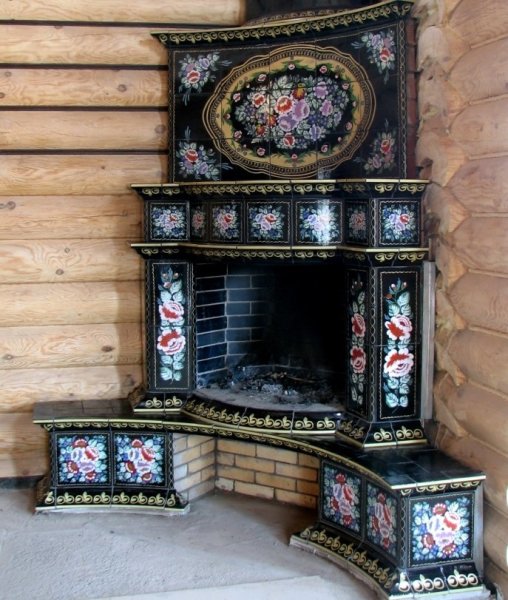

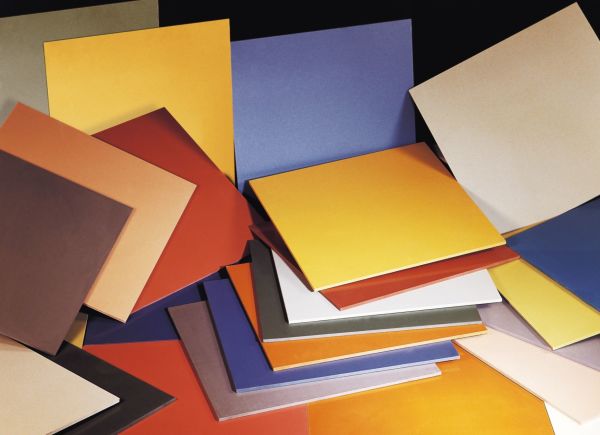
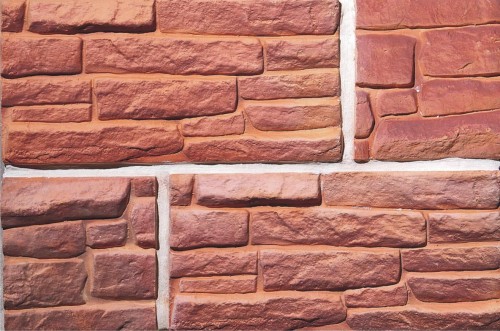
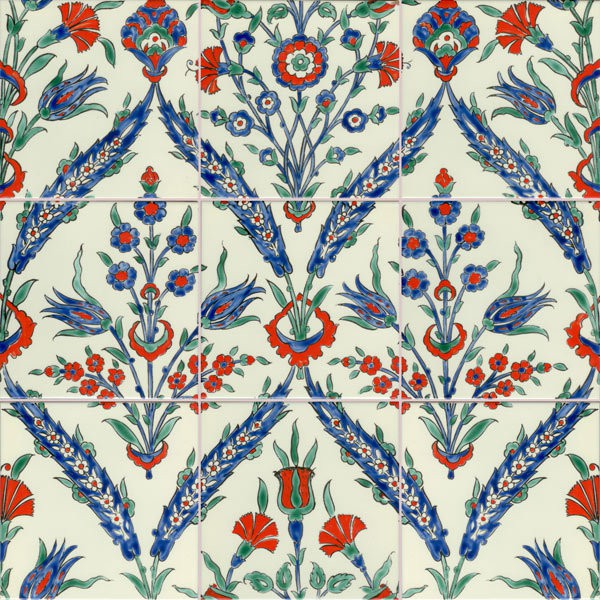
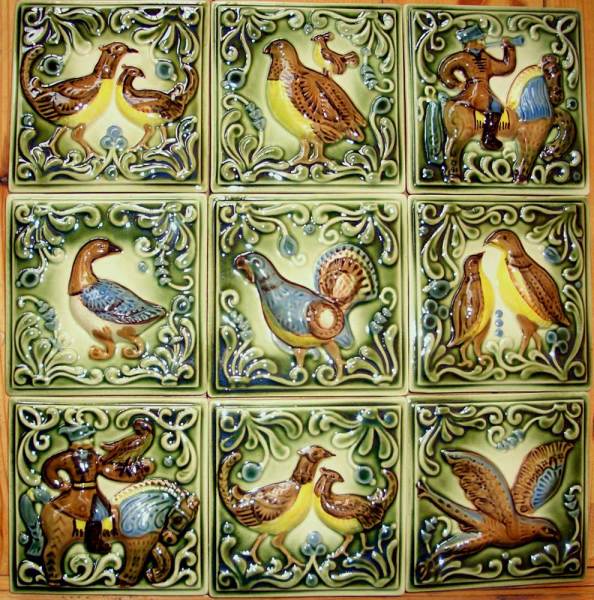
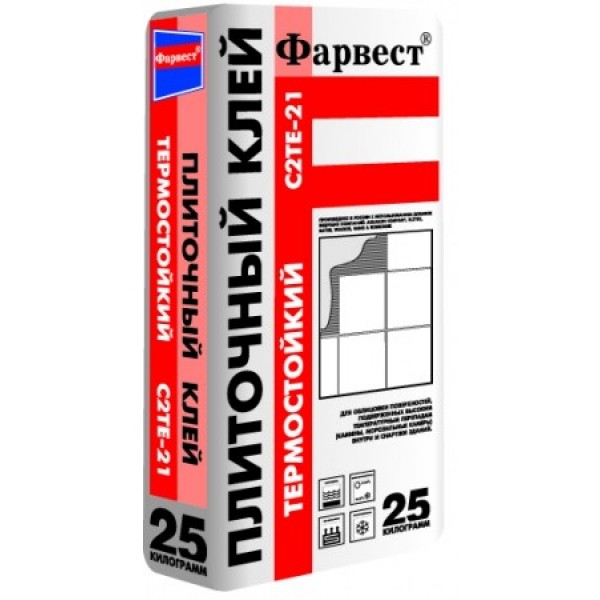
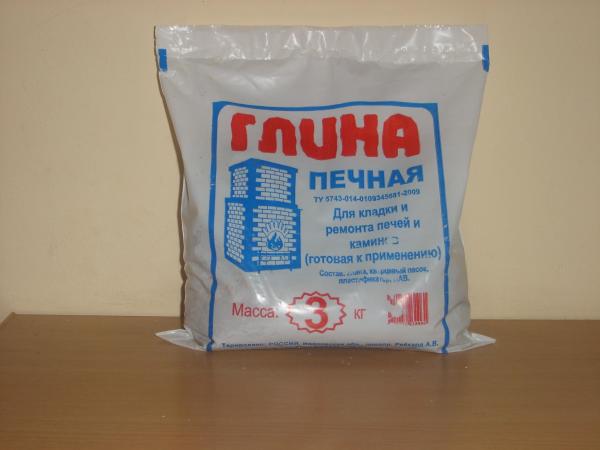

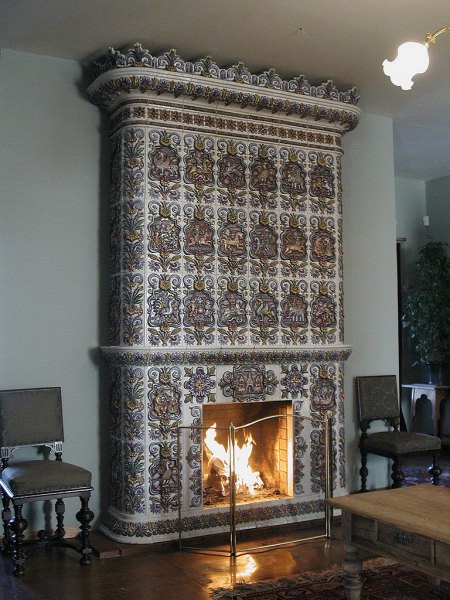

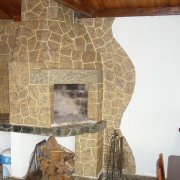

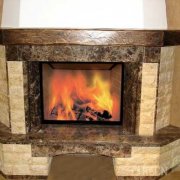
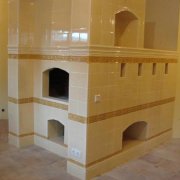

Regarding the preparation of an operating stove for a new stage of cladding, I will say that it is also desirable to include water procedures. Gently wiping with a damp cloth all the places on which glue will be applied. This point also needs to be included in the list.